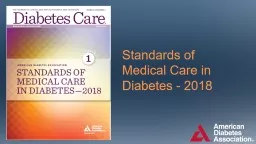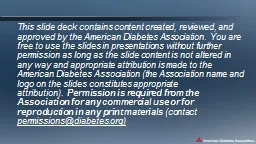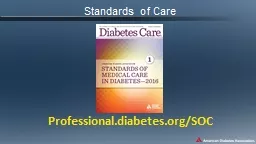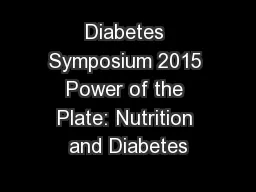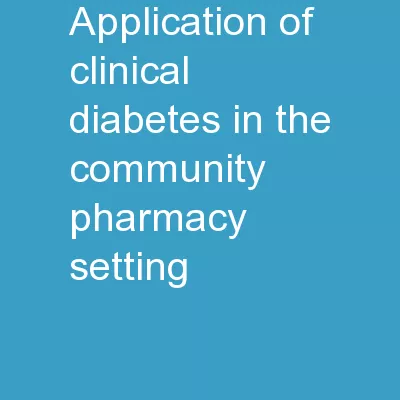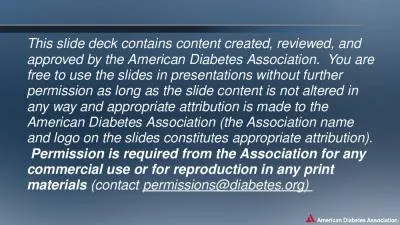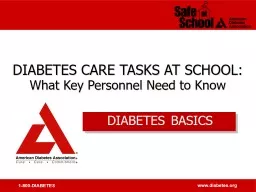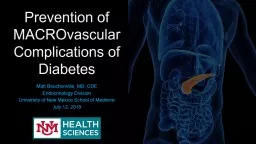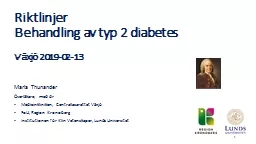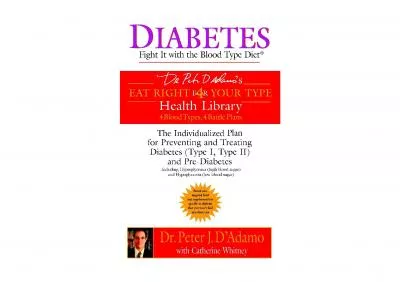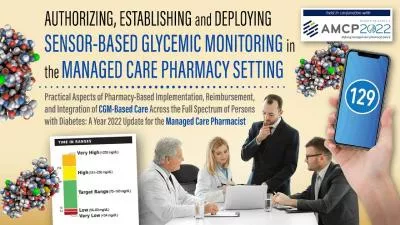PPT-Standards of Medical Care in Diabetes - 2018
Author : cleminal | Published Date : 2020-06-16
Evidence Grading System A Clear evidence from wellconducted generalizable RCTs that are adequately powered including Evidence from a wellconducted multicenter trial
Presentation Embed Code
Download Presentation
Download Presentation The PPT/PDF document "Standards of Medical Care in Diabetes - ..." is the property of its rightful owner. Permission is granted to download and print the materials on this website for personal, non-commercial use only, and to display it on your personal computer provided you do not modify the materials and that you retain all copyright notices contained in the materials. By downloading content from our website, you accept the terms of this agreement.
Standards of Medical Care in Diabetes - 2018: Transcript
Download Rules Of Document
"Standards of Medical Care in Diabetes - 2018"The content belongs to its owner. You may download and print it for personal use, without modification, and keep all copyright notices. By downloading, you agree to these terms.
Related Documents

